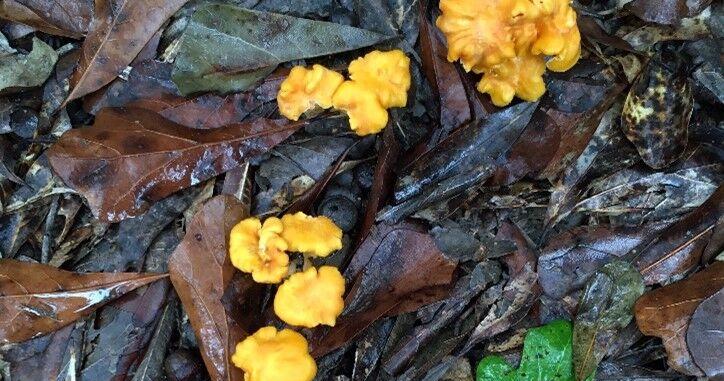At a recent Aiken Master Gardener Lunchbox lecture, the speaker encouraged regular soil enrichment to feed a microscopic world where earthworms churn and mycorrhizae performs its magic. Healthy soils contain bacteria, fungi (mycorrhizae), protozoa (single-celled organisms), nematodes (tiny non-segmented worms), arthropods (invertebrates with segmented bodies) and earthworms.
Billions of living organisms live beneath our feet. Networks of microbes harvest and deliver water and nutrients to plant roots. Protozoa feed on bacteria and fungus, cycling nutrients back to the plant. The speaker claimed that more mycorrhizae live in two handfuls of earth than there are people on earth. Someone has probably counted them somehow, so I’ll take his statement on faith. Unseen, underground agents do sustain life. Admittedly, some are less beneficial to our health and wellbeing. Watch your feet.
Approximately one-third of the food that ends up on a plate is there because of pollinators. Above ground, bees and butterflies perform their services, but other creatures work diligently below ground. Advocates protect honeybees but other insects such as ants, beetles, flies and wasps pollinate too. Wasps differ in appearance from bees by the absence of hair on their bodies. They are primarily predators of other insects, although they occasionally feed on nectar. Good wasps (in my humble opinion) include mud daubers and thread-waisted wasps. Less desirable are paper wasps, yellow jackets and hornets.
On a recent walk, my Boykin came up to me with a worried expression in his golden eyes. Usually, he has picked up a thorn in his paw, but this time a yellow jacket emerged from his back paw. Quickly checking for wasp companions, but seeing none, I consoled my dog that it wouldn’t hurt long.
The overwintered yellow jacket queen emerges in April or May and locates a nest site, often in a soil cavity. Her underground colony can reach several hundred workers by August. Populations peak in late summer. Yellowjacket stings can be life threatening if one is allergic to their venom. I am not allergic, but I maintain a healthy respect for underground wasps.
Generally, I believe in protecting pollinators, but when confronted with dangerous yellow jackets in a flower bed, I grab a container of pressurized insecticide labeled for yellow jacket or hornet control and carefully approach the nest to spray the insecticide directly into the nest entrance. I check for activity the next day and reapply if necessary. Protective clothing is highly recommended. I have been stung while gardening, so I watch for yellow jackets. If wasps are present in the woods and not a danger to me or my pets, I will leave them alone and focus on what’s ahead.
I don’t want to miss any beauties above ground. In the woods, I now find chanterelle mushrooms, recognizable by their vibrant yellow to orange hues. These valued fungi are prized by foragers for a rich, earthy flavor and meaty texture. Chanterelles cannot be cultivated commercially due to their specific symbiotic relationships with trees, so foraging is the only way to obtain them.
Knowing when and where these elusive mushrooms appear is key to a successful harvest. These fungi and a multitude of other mushrooms have sprung up along the dirt paths because of recent rains. Mushrooms are above-ground fruiting bodies of fungi that live in the soil and feed on decaying organic matter such as old roots and stumps.
Toadstools, mushrooms and puffballs of various shapes and sizes will sprout overnight in wet weather. Fungi grow from a central point outward. Each year as the fungus grows, the circle expands. Most mushrooms do not damage a lawn, but fairy ring fungi do cause drought stress. Their fungal strands called mycelia make the soil repel water. In a grassy lawn, fairy ring fungi are difficult to control. Saturate the area for several hours and aerate to allow water to reach the roots.
In spite of usually minor inconveniences, many worlds beneath our feet are truly beneficial. With observation and understanding, we develop appreciation and awareness of our many relationships with the natural world. If you take a quiet walk through the early fall woods, you will discover many of nature’s wonders. Watch your feet. Consider the mysteries and lives that endure below ground level. Then look up into the canopy of oaks, hickories, and pines.
Try to avoid stepping on yellow jackets. Marvel and believe.


Comments are closed.